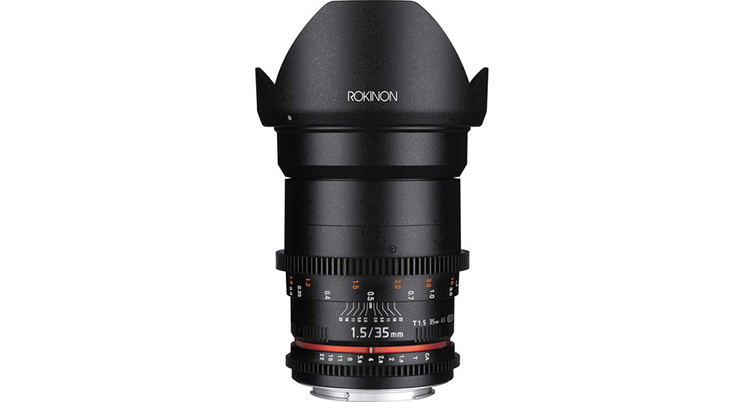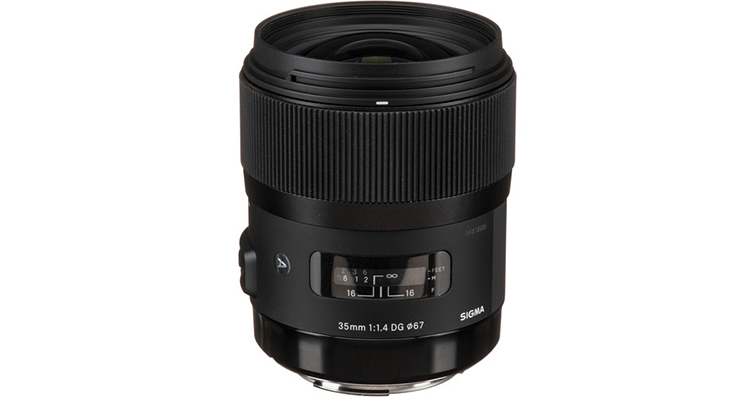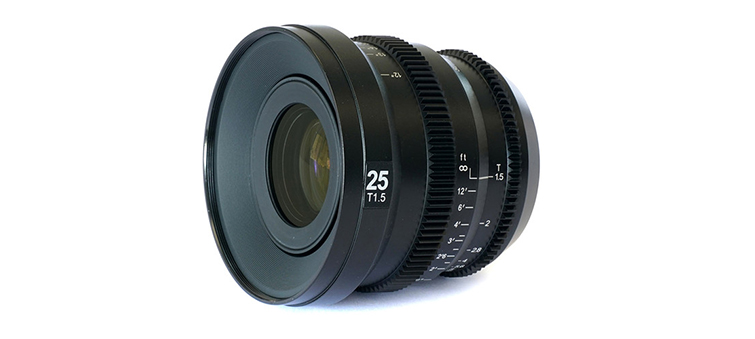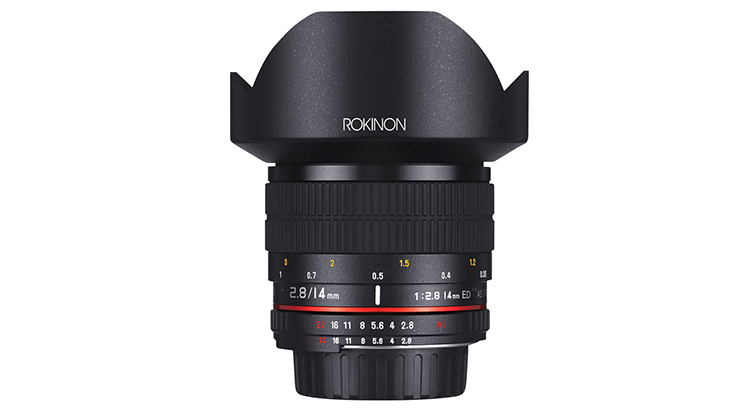
2020’s Best Prime Lenses Under $1,000
Capture beautiful images with these high-quality, low-cost prime lenses.
Another year, another NAB full of jaw-dropping gear announcements and — oh, wait.
Yeah, it hasn’t been a particularly robust year for video gear releases and announcements. Let’s not focus on that. Instead, let’s appreciate that it’s been a pretty good year for spending less money on gear.
Manufacturer discounts and retail-site sales have made lenses and older-yet-still-relevant camera models more accessible to creatives, and that’s great for filmmakers looking to build up their kit without breaking the bank.
With that in mind, let’s look at some prime lenses that land in the high-quality/low-price sweet spot, all of them available right now for under $1,000.
Rokinon Cine 35mm T1.5 Cine DS Lens
Image via Rokinon.
Rokinon Cine series lenses might be the best deal in the industry right now. Each lens is fast, sharp, and priced to move, and pulling focus is about as smooth as it can be for glass this size. The series itself is also very affordable — for right around $1,500 total, you can own the 24mm, 35mm, 50mm and 85mm lenses.
This is a manual lens, so don’t expect any auto-focus capabilities. One thing these lenses do have going for them? Durability. For example, I was in New Mexico shooting a video with the 85mm. I was in a rush, and I didn’t secure the plate to the tripod head. My camera slid right off — and the lens survived completely unscathed.
It’s worth noting that the weight of the lens had nothing to do with the camera’s tumble; it’s not heavy enough to need lens support, and it does just fine on a tripod or gimbal.
Watch the video above to really get a grasp on the quality and value of these lenses. You’ll see Armando Ferreira do a side-by-side comparison of the Rokinon Cine 24mm Prime and the XEEN Cinema 24mm Prime. When you see the results, you might think twice before investing in expensive glass.
Price: $599
Sigma 35mm f/1.4 DG HSM Art Lens
Image via Sigma
Right before compiling this list, I took an informal survey of friends to ask which lenses they were in to these days. An overwhelming majority responded with the same answer: the Sigma Art series.
These lenses have skyrocketed in popularity over the past three years or so — and for good reason. First of all, they’re built like tanks and have a brag-worthy super-sharp 1.4 aperture. Plus, decent auto-focus capabilities make them a solid choice for filmmaking and photography. They fit Sony E-mount, Nikon F-mount, Canon EF-mount, and Micro Four Thirds, so really, no matter what camera you’re using, you’re good to go with Sigma.
In the video above, Gerald Undone takes a look at the Sigma Art lens lineup as a whole and explores the benefits offered by each lens. Ultimately, it’s a test of prime versus zoom, so it’s a good resource for anyone currently trying to decide if it’s the right time to purchase a prime.
With that choice in mind, it’s worth noting that while all of the Sigma Art lenses are high-quality, the 18-35mm is simply one of the best deals on the market. So if you think there’s even a small chance that you might need the ability to change focal lengths quickly, give this glass serious consideration.
Price: $699
SLR Magic MicroPrime CINE 25mm T1.5
Image via B&H
Underrated. If I was allowed only one word to describe this lens and, really, the entire line of SLR Magic lenses, that word would be underrated. For the price, the lenses are superb. Even if you take the price out of the equation, these lenses are superb. Okay, so maybe I should have just gone with superb for my one word.
I own the 10mm and 25mm HyperPrime Cine Lenses for the BMPCC4K Micro Four Thirds mount, and I’ll be purchasing the MicroPrime 25mm in the weeks ahead. I recently got the chance to shoot with it and immediately knew I had to have it.
Boasting a 13-blade iris, 82mm ND/UV filter size, 150 degree focus throw, and hard stops, this a lens designed for filmmakers (It’s not a photo lens by any means) who have time to compose and catch focus.
The MicroPrime series is available for Sony E-mount, Fuji X-mount, and Micro Four Thirds mount. As such, if you’re using a Canon camera or the BMPCC6K, you’ll need an adapter.
If you’re looking for some test footage, check out this short vignette Ryan Booth shot with a BMPCC4K using the SLR Magic HyperPrime. This footage is sharp.
if you’re looking for a cheap, cinematic-quality prime lens, look no further than the SLR Magic line.
MicroPrime Price: $529.00
HyperPrime Price: $499.00
Rokinon 14mm f2.8 ED AS IF UMC Series
Image via Rokinon
This lens is the cheapest option on this list. Frankly, it’s also the simplest. And it’s 100% worthy of a spot in your filmmaking bag.
It’s super wide and super sharp — a lot of people like this one for astro photography, so that’s something. A minimum focusing distance of 0.9 inches lets you get intimate with the 2.8 aperture and pull off bokeh-rich cinematic insert shots. Additionally, this glass works with all mount models.
Still, the biggest selling point here is the price. If you’re going to rely on an 18-35mm or 24-70mm lens for the bulk of your shooting, why not carry around a small, cheap prime that works for your portraiture, product B-roll, and B-cam needs?
While the 14mm is a good option, don’t rule out the 20mm and 24mm. They’e great for capturing a good master shot while you’re using something a little more intense for close-ups and medium shots.
In the review above, Kaz Cunning highlights an aspect of the lens you might find frustrating — the long, slow throw that’s required to catch focus.
Let me make clear — this lens is not meant for run-and-gun videography. It’s much more appropriate for a set-up-slowly-and-eventually-shoot workflow. This fact in no way diminishes just how sharp this thing is. You won’t be using it as much as your 24, 35 and 50mm lenses, but if you’re going to get glass this wide, there’s no reason to break the bank doing it.
Price: Around $350
Check out the articles below for even more info related to lenses, cameras, and other video gear.
- Why the Best Camera is NOT the One You Already Have
- 5 Affordable Fisheye Lenses for Shooting in Small Rooms
- The Best Inexpensive Lenses for The BMPCC6K
- What I’ve Learned From Starting a YouTube Channel in 2020
- The Creative Motivation Behind Deep vs. Shallow Depth of Field
Cover Image via Devrim PINAR








